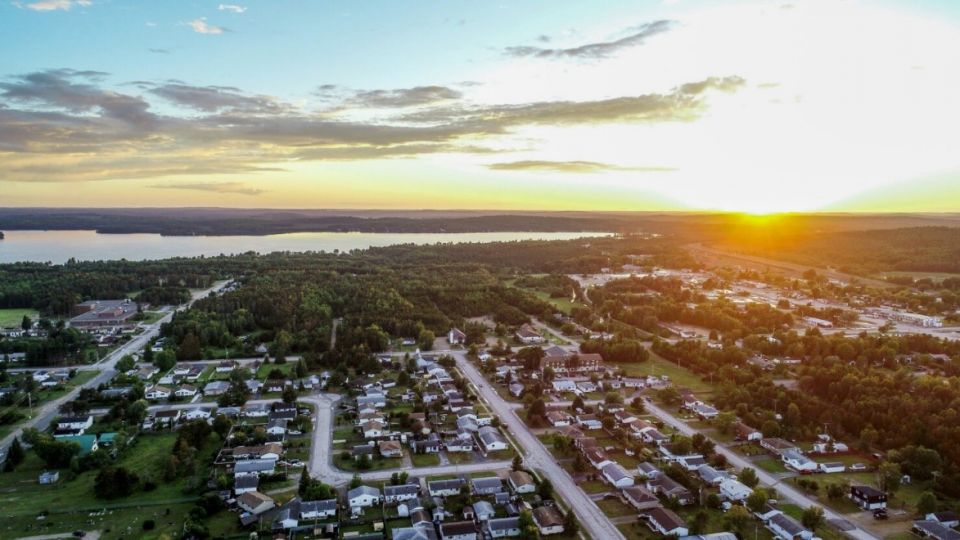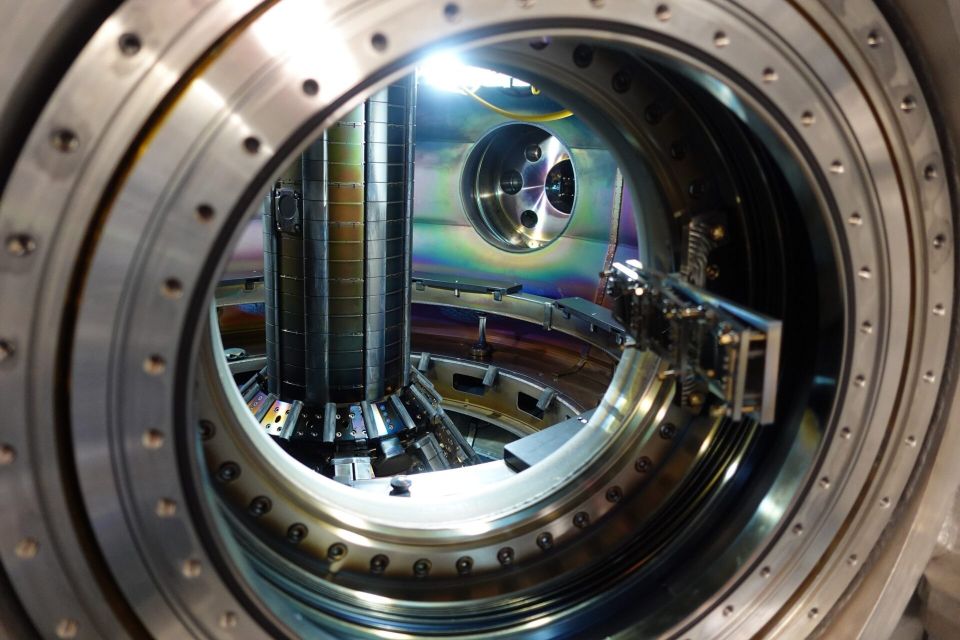ANS Annual Conference: Nuclear waste

With increasing demand for clean, reliable, and safe sources of energy, the conversation around nuclear energy is changing. And so too is the conversation around nuclear waste, even as the country struggles to find a path for the disposal of its spent nuclear fuel and high-level radioactive waste. From community engagement, to recycling, to existing success around other forms of nuclear waste management, the conversation around nuclear waste has many different angles, and an executive session of the American Nuclear Society’s 2024 Annual Conference in Las Vegas aimed to delve into some of those discussions.
While the question remains about what to do with our spent nuclear fuel, it seems the waste issue is not dampening people’s enthusiasm for new nuclear projects, said Todd Allen of the University of Michigan’s Nuclear Engineering and Radiological Sciences Department, who moderated the panel session “Nuclear Waste: The Changing Opportunity.”
“But I think it’s easy to extrapolate that, at some point, if we don’t figure this out, it will,” Allen added, noting that there are still choices that need to be made involving the technical, political, and social aspects of nuclear waste. “That’s the conversation I want to have,” he said of the panel session.
Nevada’s perspective: The session began with comments by Fred Dilger, executive director of Nevada’s Nuclear Projects Agency, who reiterated his state’s opposition to the Yucca Mountain repository project.
“We know it is the law of the land, we don’t like it, we have been fighting it for 37 years, and we will fight it for another 37 years if we need to,” Dilger said. “But we have also been actively engaged in trying to come up with alternatives and look for a path forward.”
That path forward, Dilger said, begins with terminating the Yucca Mountain licensing proceeding. Completing the licensing process and inevitable litigation will take about 10 years and cost $2 billion to $3 billion, he said, adding that that money is better spent elsewhere. “We think that as long as the licensing proceeding and Yucca Mountain is not officially dead, it will suck all the oxygen out of the policy discussion and ensure that good alternatives will not get a good hearing.”
Dilger also said Nevada would like to see the U.S. nuclear waste program removed from the auspices of the Department of Energy and placed into a single-purpose organization modeled on a federal corporation similar to the Tennessee Valley Authority. In addition, he said the DOE officer of nuclear waste negotiations should be restored and that clear repository standards should be put in place so that the “rules of the game are known prior to a site selection or characterization.”
Stakeholders’ perspective: Katrina McMurrian, executive director of the Nuclear Waste Strategy Coalition (NWSC), likewise recommended that the DOE reestablish the Office of Civilian Radioactive Waste Management, which—until it was dismantled—oversaw the Yucca Mountain project.
McMurrian stressed that the NWSC, an organization representing state utility regulators, electric utilities, consumers, governments officials, and other stakeholders, is not interested in standing in the way of new nuclear development. “Most of our members are pronuclear, or at least resource agnostic,” she said, adding that the NWSC is “not ‘Yucca Mountain or bust.’” She said that rather, the coalition wants to see the Yucca Mountain licensing completed, its lessons learned, and new policies enacted.
McMurrian also said that the United States needs a comprehensive plan for the management of spent nuclear fuel and called on the DOE to publish an integrated nuclear waste management program plan that identifies short- and long-term actions needed for the transportation, storage, and permanent disposal of spent fuel.
Turning to transportation, McMurrian said the NWSC supports the DOE-NE’s spent nuclear fuel package performance demonstration project. Intended to build public trust and confidence in the safety of spent fuel transportation, particularly by rail, the project consists of the physical testing of a full-sized spent fuel transportation cask.
The DOE: “There’s nothing technically stopping us from doing what we need to do; it is public trust and the political will to do something,” said Paul Murray, deputy assistant secretary of energy within the DOE-NE. Murray, who provided a brief history of the Nuclear Waste Policy Act (NWPA) and waste management in the United States, noted that even if the DOE could meet its schedule to begin removing spent fuel from nuclear power reactor sites (sometime around 2050), it would still cost the department around $35 billion to do so.
Despite its failure to meet the NWPA deadlines for taking possession of spent fuel, he said the DOE is making “slow, controlled, steady progress” that will help build public and political trust. “The most important thing is we start the program moving and we start to make small but steady gains as we are moving forward,” he said, noting that the NWPA will need to be amended before the DOE can open an interim storage site.
Murray provided some recent examples of progress the DOE is making, including the department receiving initial approval (Critical Decision-0) for siting a future federal consolidated interim storage facility and the approval of the Association of American Railroads for the DOE’s Atlas railcar system for transporting spent fuel canisters.
He also highlighted his office’s spent fuel package performance demonstration project, discussed earlier by the NWSC’s McMurrian. He said the DOE will conduct whatever tests are necessary to ensure public confidence in spent fuel transportation canisters. “If people are worried about dead chickens hitting the cask, we will throw dead chickens at it,” he joked.
Recycling and reprocessing: Jenifer Shafer, associate director for technology at the Advanced Research Projects Agency–Energy (ARPA-E), followed by discussing opportunities for reducing HLW volumes, including through the reprocessing and recycling used nuclear fuel. The agency’s Converting UNF Radioisotopes into Energy (CURIE) program is currently investigating opportunities for reprocessing used fuel to recover reusable actinides and recycling them into new fuel for advanced nuclear reactors.
“I have been very interested in what nuclear fuel recycling could bring to enabling nuclear energy within our future,” Shafer said, adding that there needs to be a conversation about the economics of recycling as well as the proliferation concerns surrounding reprocessed plutonium.
She noted that there are a number of private companies that are discussing the possibility of building commercial recycling and reprocessing capabilities, including SHINE Technologies, Orano, Curio, and Oklo. She added that ARPA-E is well situated to help such companies.
In regard to proliferation concerns, Shafer said advances in machine learning and artificial intelligence present opportunities for improved real-time monitoring of nuclear materials, which not only improves safeguards and security, it also can improve efficiencies, further reducing costs.
“As we’ve been thinking about all these different pieces, what I would say is now, with the emerging opportunities in this space, this is a very good time to be reexamining recycling,” she said.
Public perceptions: Kuhika Gupta, associate director for the Institute for Public Policy Research and Analysis at the University of Oklahoma, concluded the session by discussing some of the public policy and social aspects surrounding waste management.
Gupta began by noting the growing interest in and favorable attitudes toward nuclear technologies, saying it is important to think about the narrative surrounding nuclear power and why it resonates with certain communities, such as Kemmerer, Wyo., which is set to host TerraPower’s Natrium advanced reactor. For such communities, advanced reactor projects are about more than just jobs and energy security, she said. “It is bringing a vision for their community to support their future and what they want their community to be for the next few decades.”
Likewise, for something like the consent-based siting of a nuclear waste repository to work, the community needs to lead the narrative surrounding the facility, Gupta explained. Rather than trying to sell the community on what the benefits will be to them, it is more important to let the community decide, allowing them to “codesign” the facility. This can include what will be included in the facility, such as research and visitor centers, down to the color and design of the buildings.
“Let them pick the attributes that match the values and vision of their community,” Gupta said. “That process, we find time and again, matters a lot more than the specific attributes that you can just give them.”
More from the ANS Annual Conference:







